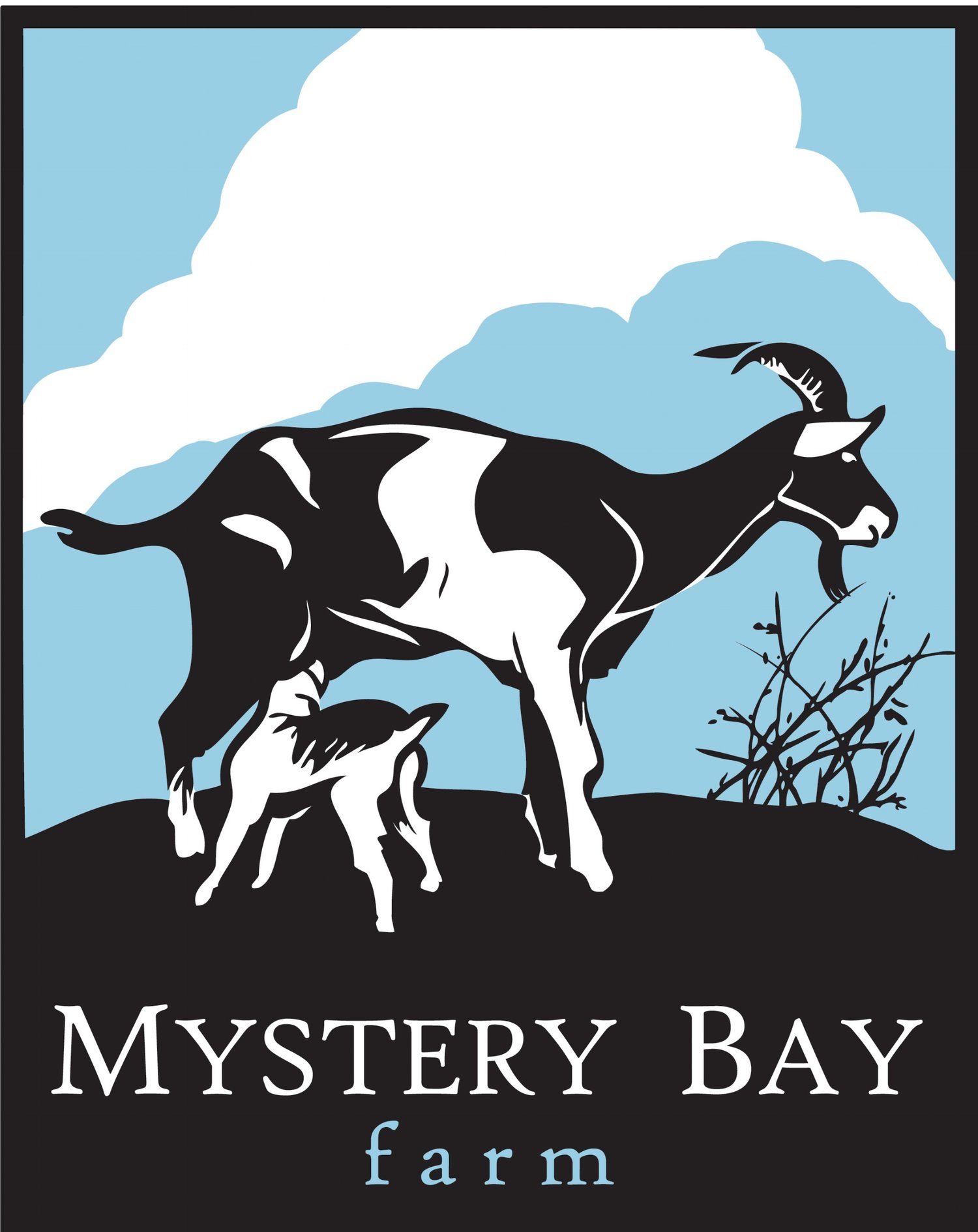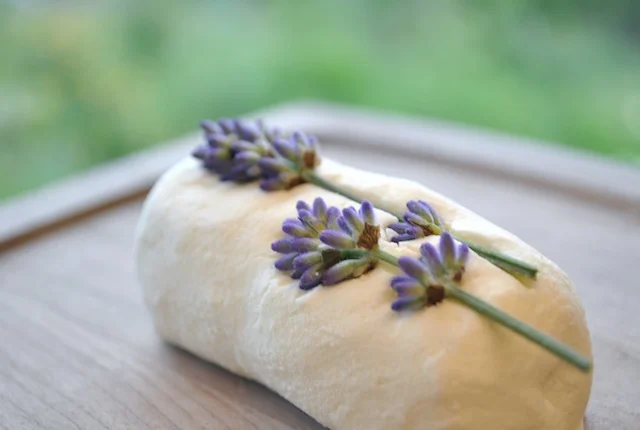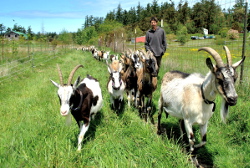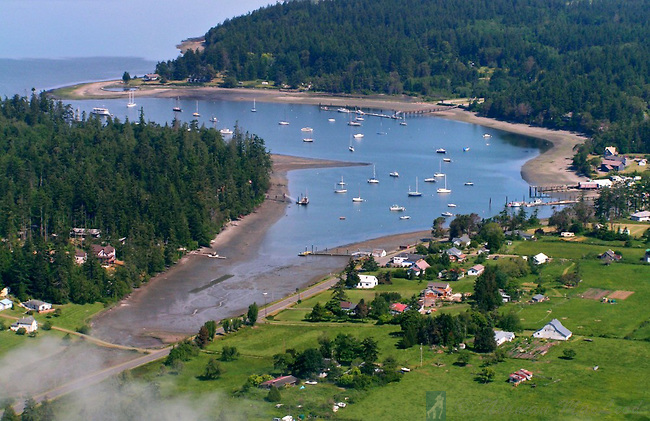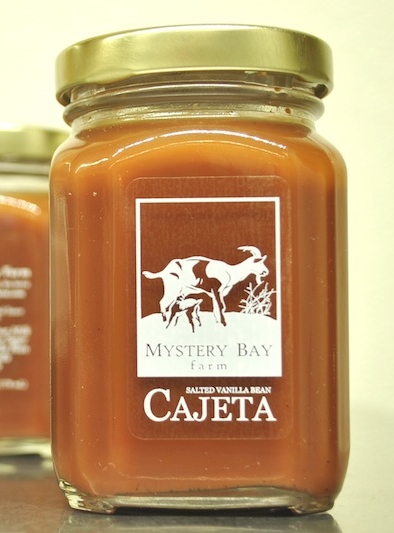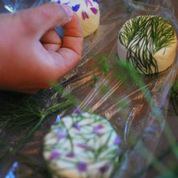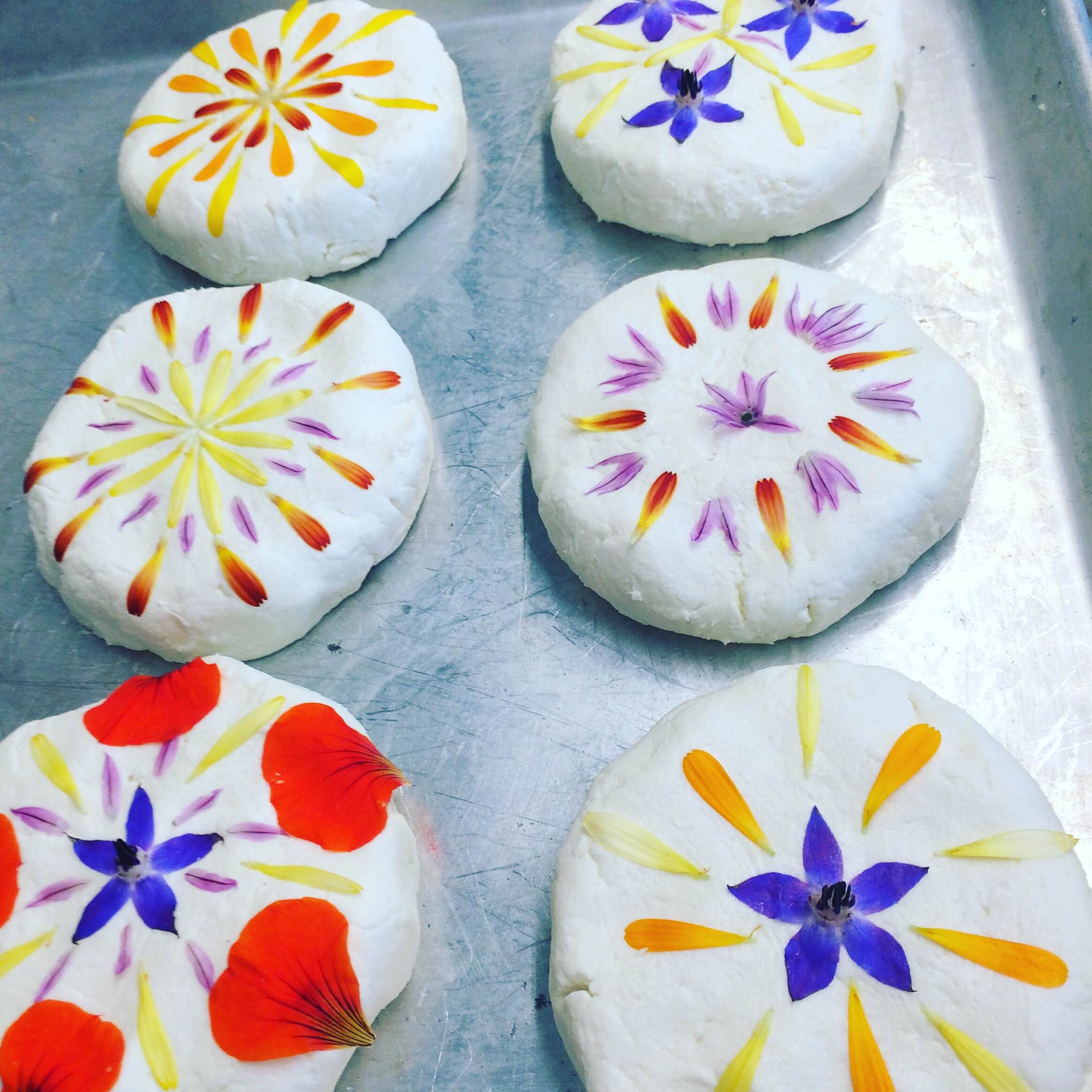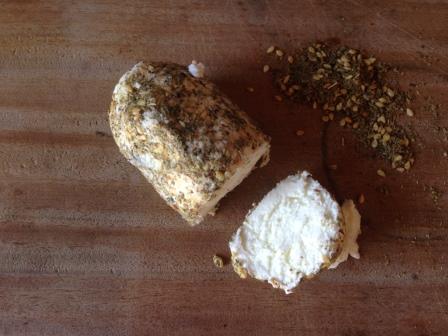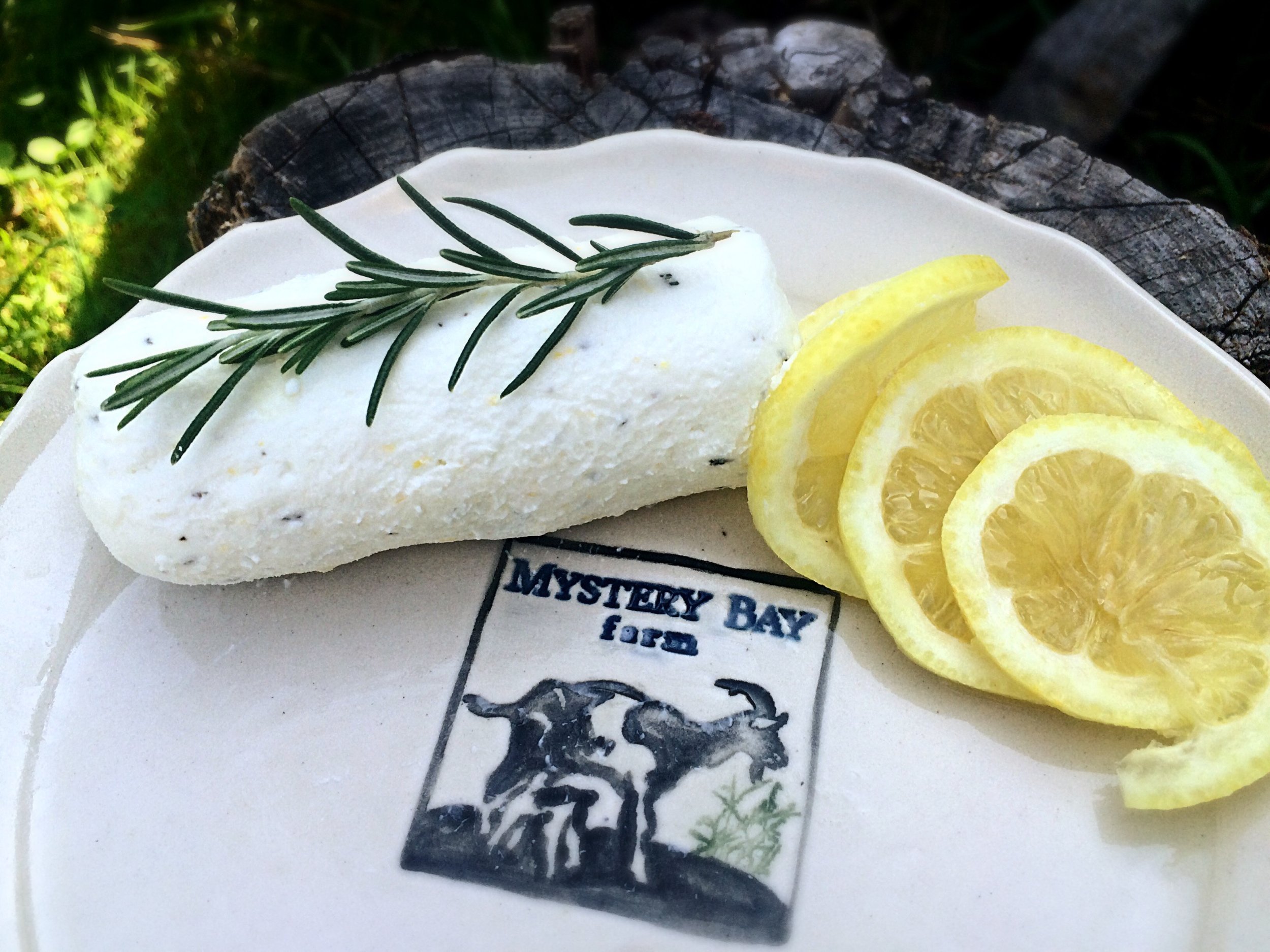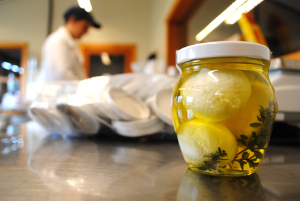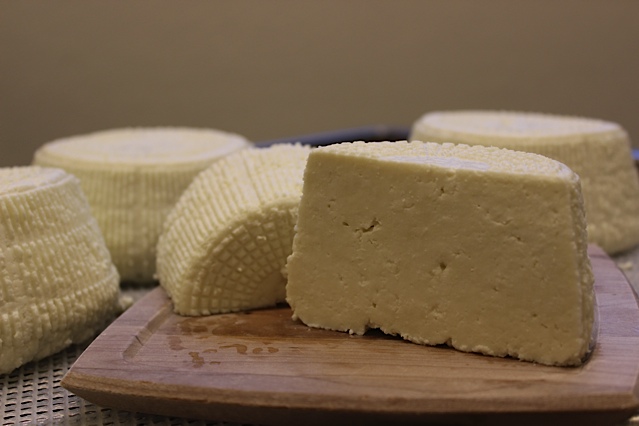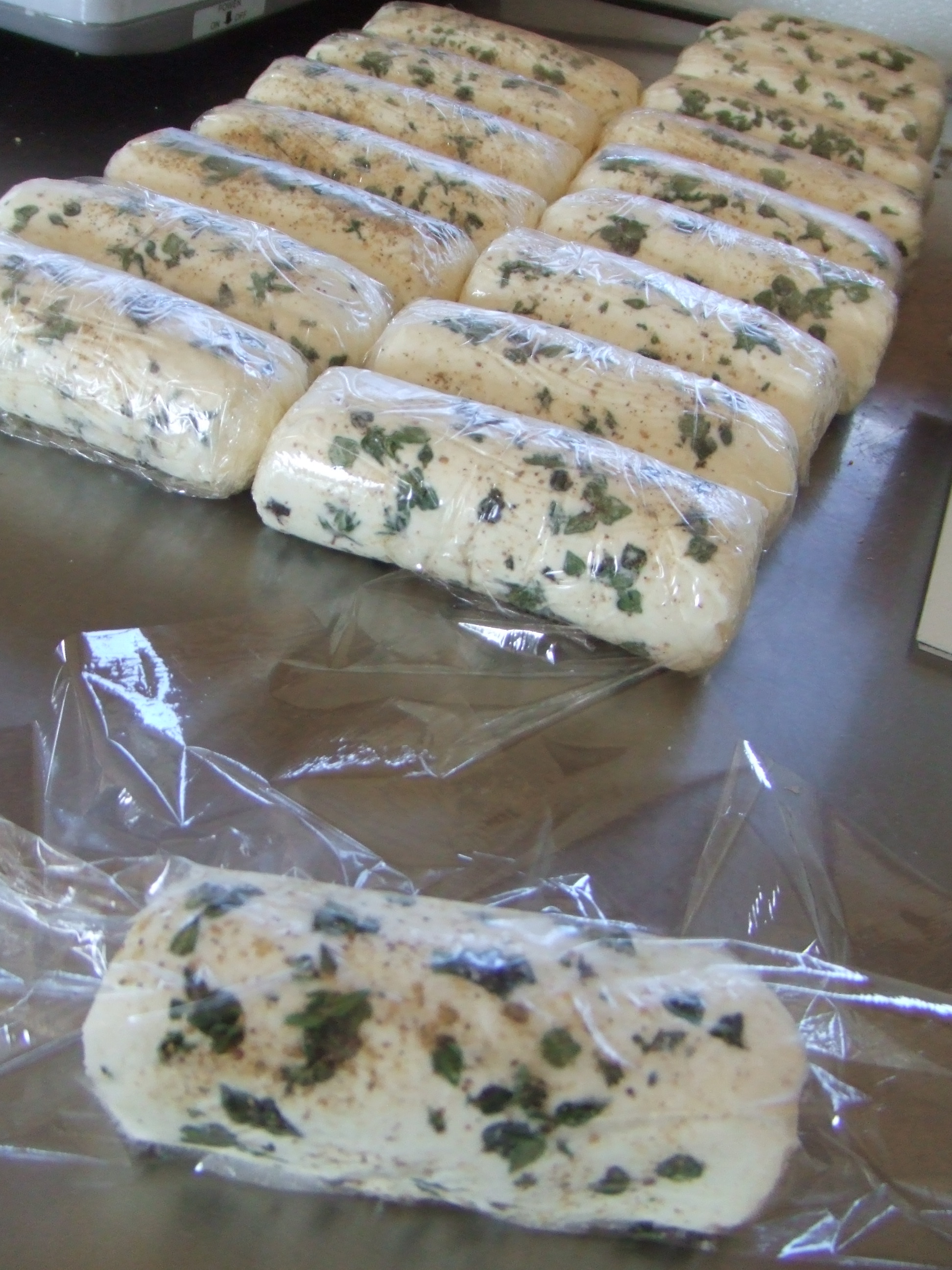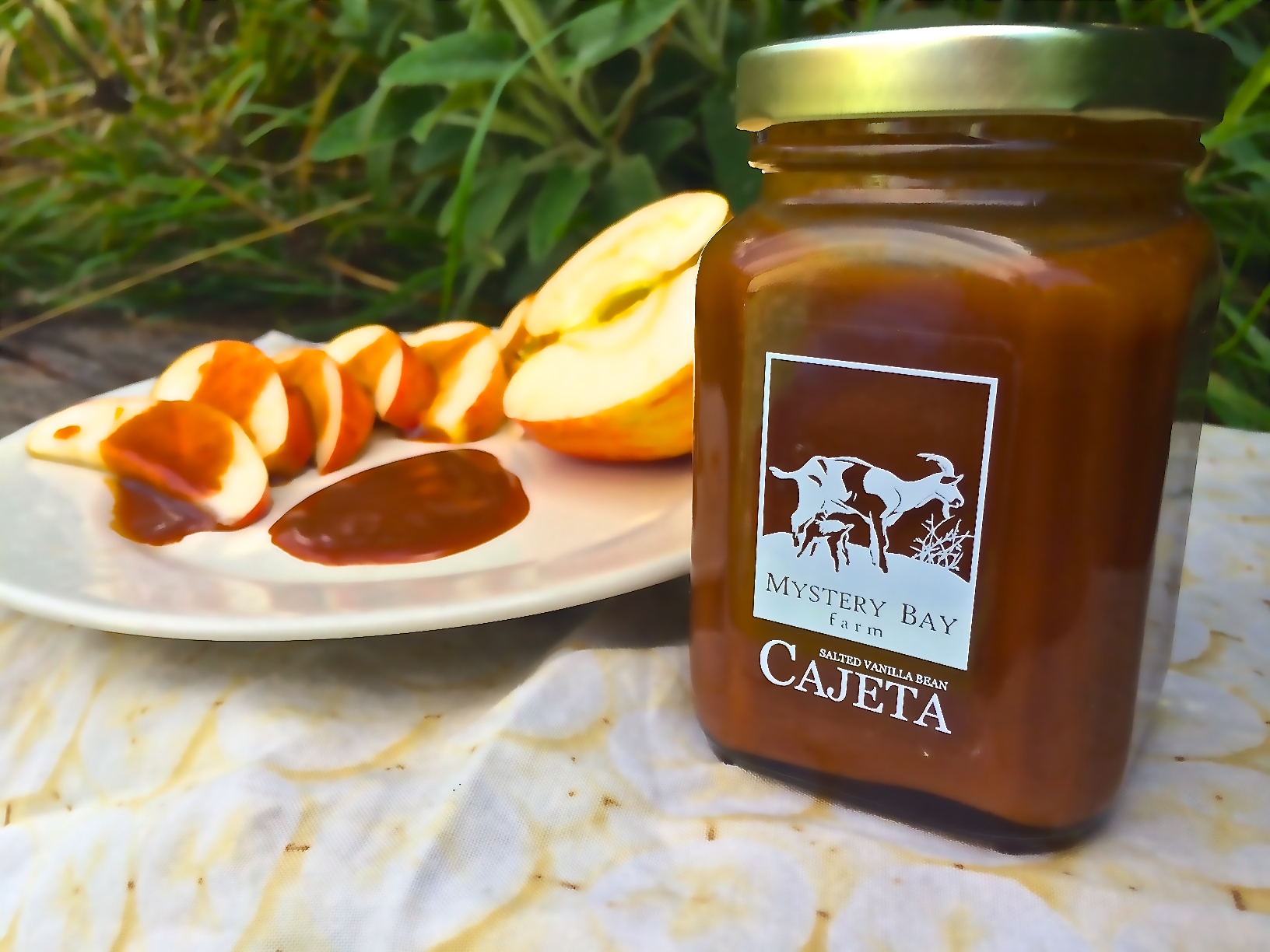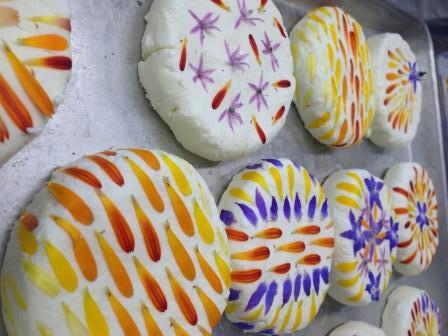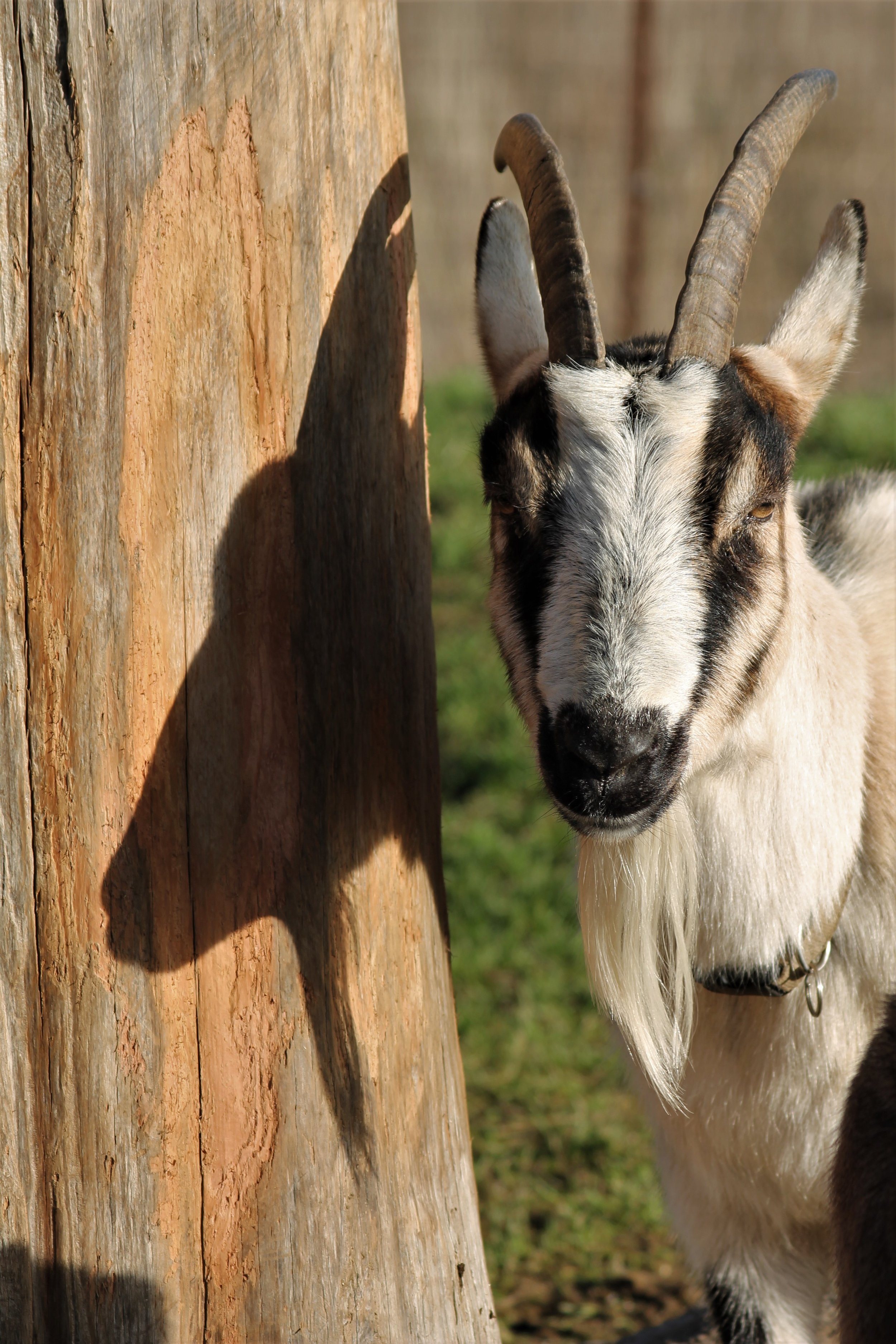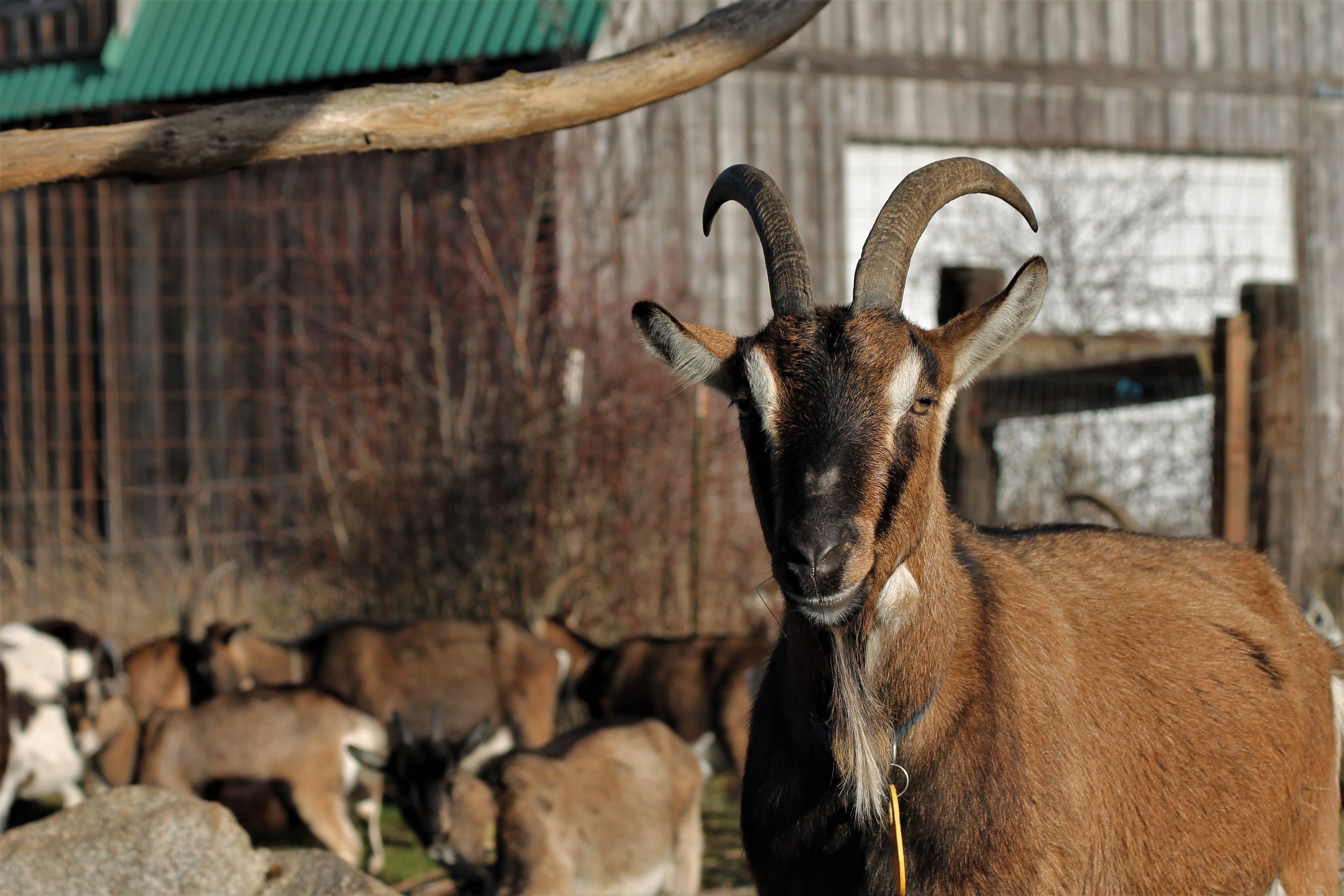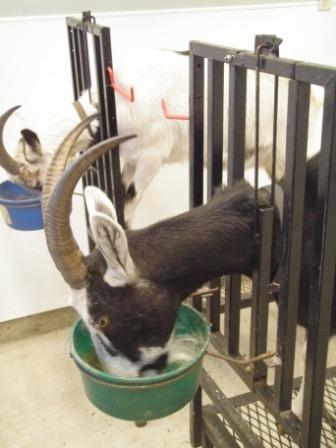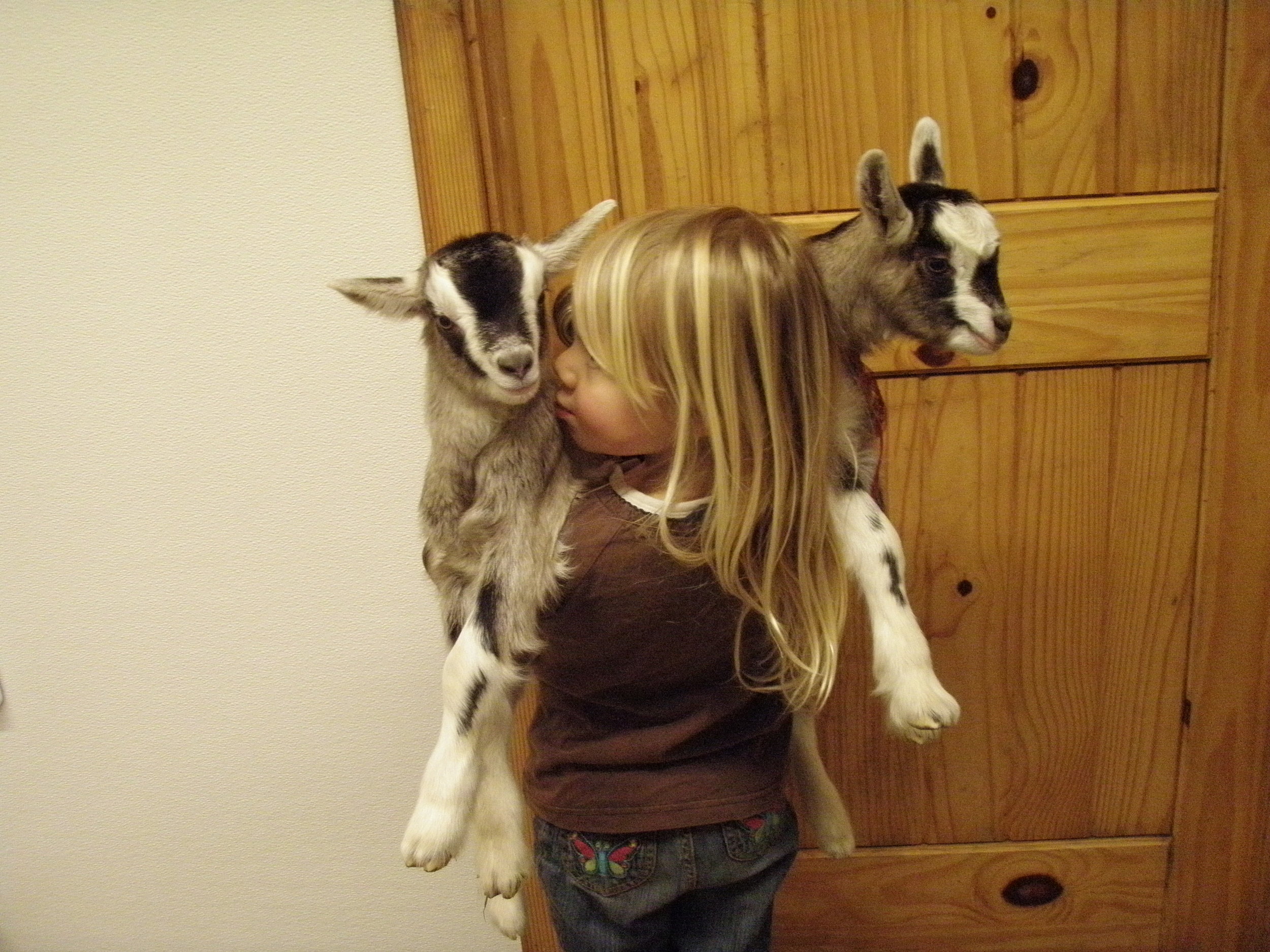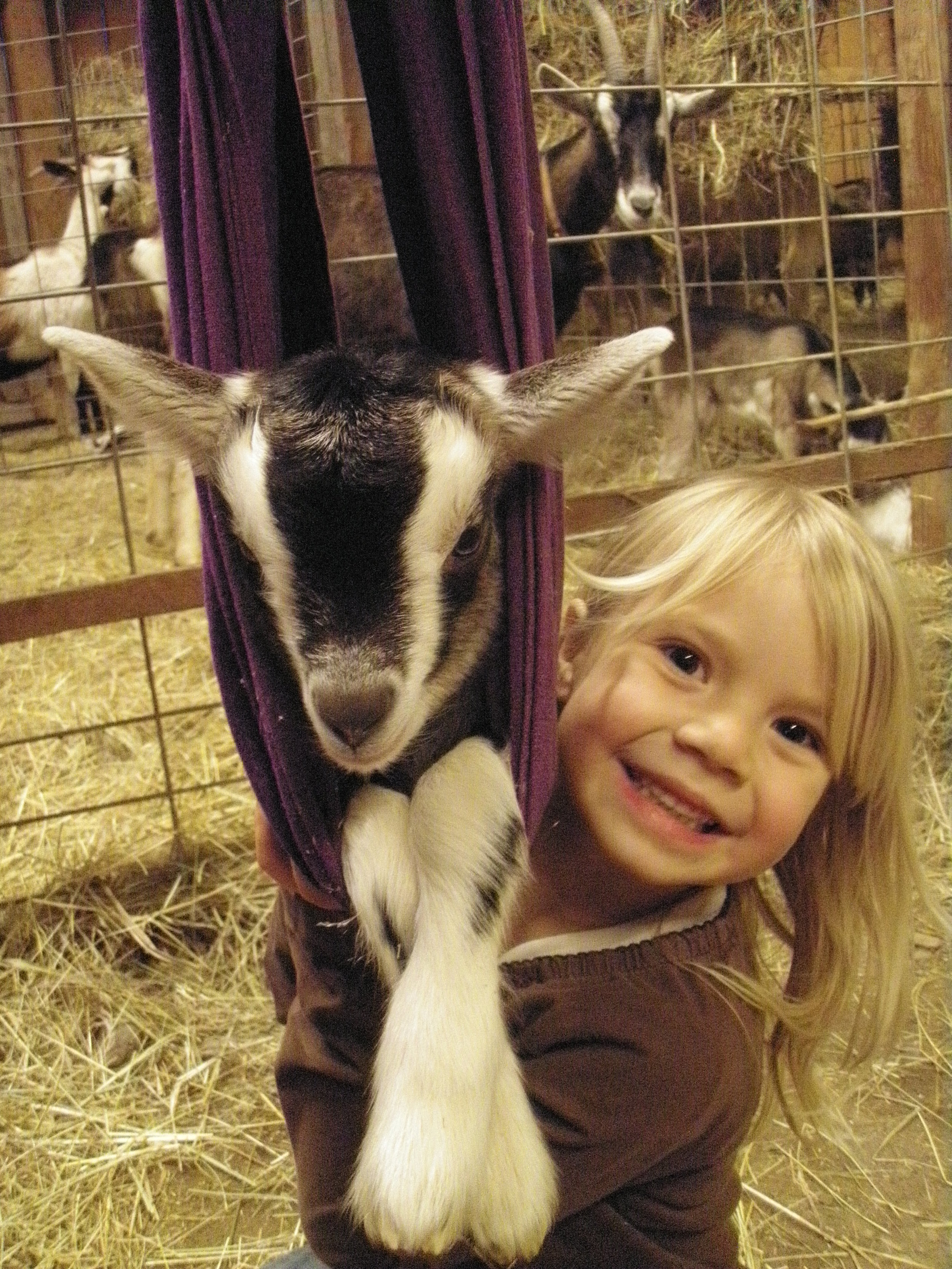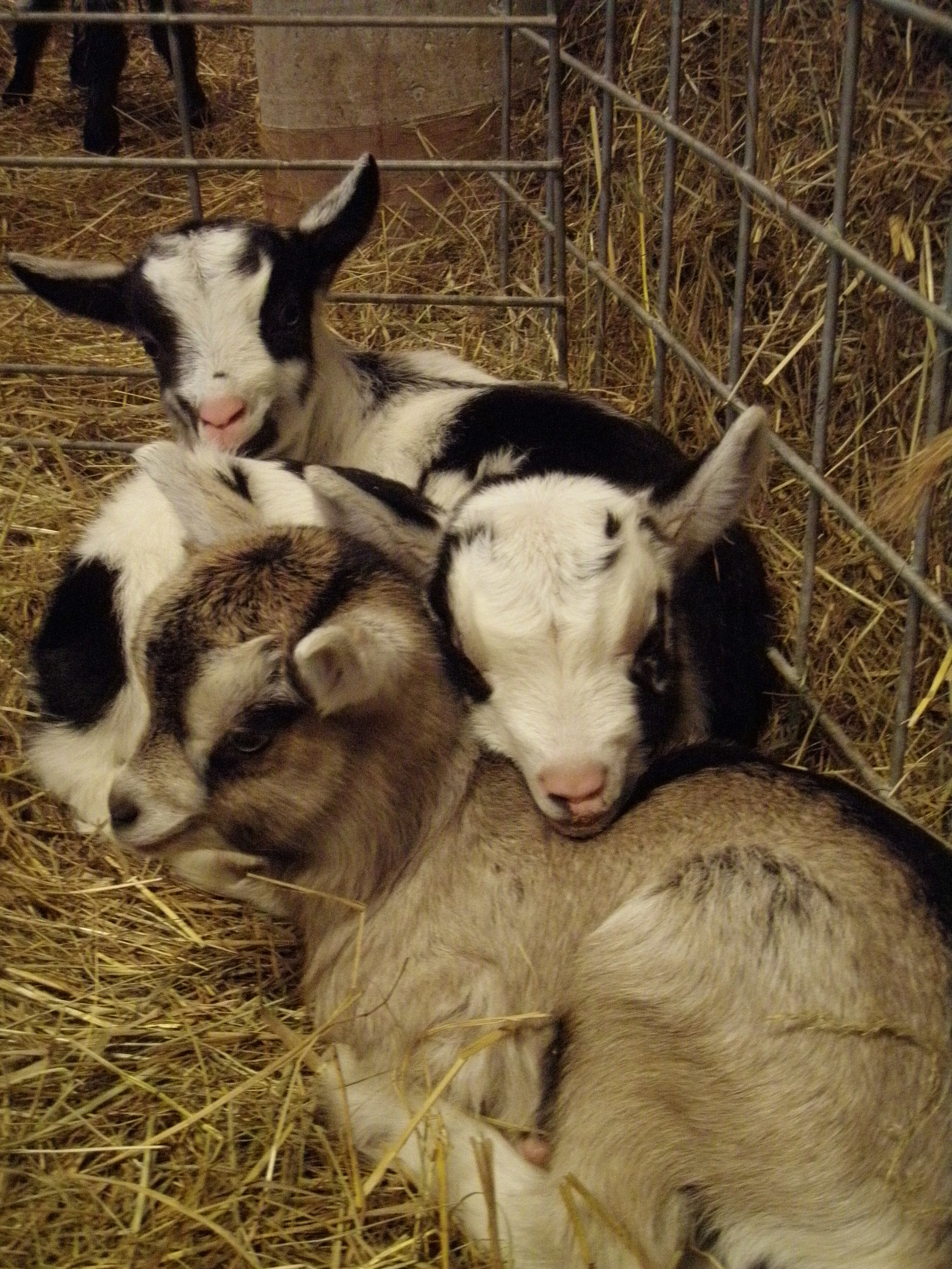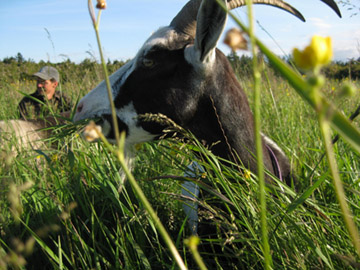We milk 100% American Alpine dairy goats. They each have been raised on our farm and have names and distinct personalities (come visit and our 9 year old can tell you the line up!). We breed the adults in the fall, which gives us spring kids five months later. We milk between 20 and 25 goats each season.
Since our goats 'are what they eat', we judiciously monitor their food. We practice intensive, rotational grazing which utilizes classic grass pasture with brush islands; this mix highlights the natural need for browse in a goat's diet and reduces the dependency on hay during the spring and summer months. In contrast to cows and sheep, goats browse, rather than graze, and cannot get all of their necessary nutrients from a grass-only pasture. When given a choice, goats will eat browse plants, such as blackberry, roses, trees, ivy etc., which are more suited to their digestive system. Grass is consumed, but in a more limited and picky manner. We have established a rotational browsing system that incorporates the established high-quality grass pasture with edges and islands of brush (the native Nootka Rose, hawthorn, blackberry etc.) that can sustain the majority of the goat's food needs for up to eight months of the year. We have begun planting more brush islands within the pastures which include edible fruit trees surrounded by native berries and brush to further diversify our browse, natural habitat and food production. In turn, they provide high quality milk with undertones of our maritime climate. We only substitute their varied pasture with local hay (which we cut during the peak of seasonal protein levels), seaweed and organic grain.
